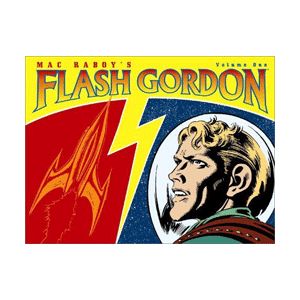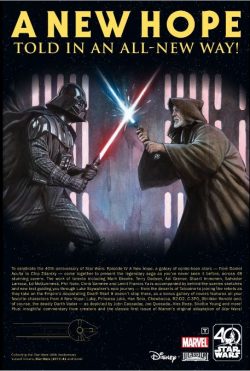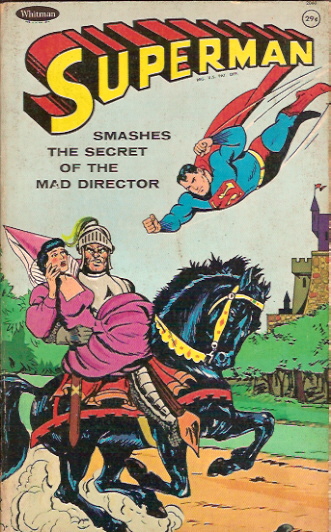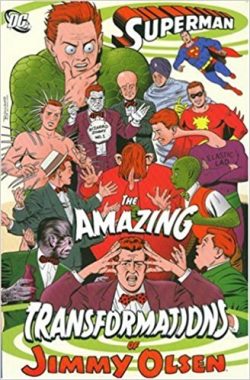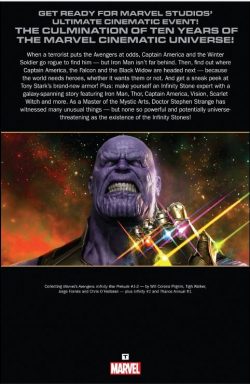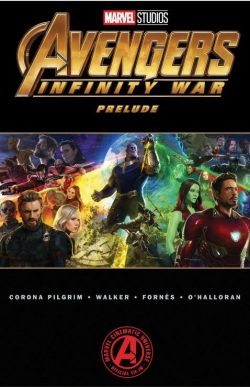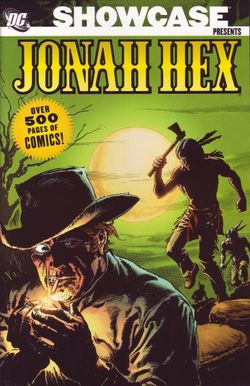
By John Albano, Arnold Drake, Michael Fleisher, Robert Kanigher, Denny O’Neil, Tony DeZuñiga, Noly Panaligan, Doug Wildey, George Moliterni, José Luis GarcÃa-López, Gil Kane, Jim Aparo & various (DC Comics)
ISBN: 978-1-4012-0760-1
These days comics fans are not well-served in regard to genre fare. Although Marvel has gone a long way towards recovering (at least in digital formats) its back catalogue of war, crime horror and western yarns, DC – which arguably excels in all those categories as well as teen humour and funny animal publications – seems content to let such riches lie fallow.
So if you want classic material you need to look at older offerings such as their wonderful Showcase Presents archive line…
The Western is an odd story-form which can almost be sub-divided into two discrete halves: the sparkly, shiny version that dominated kids’ books, comics and television for decades, best typified by Zane Grey stories and heroes such as Roy Rogers and Gene Autry… and the other stuff.
That sort of cowboy tale – grimy, gritty, excessively dark – was done best for years by Europeans in such strips as Jean-Michel Charlier’s Lieutenant Blueberry or Bonelli and Galleppini’s Tex Willer, which made their way into US culture through the films of Sam Peckinpah and Sergio Leone.
Jonah Hex was always the latter sort.
DC – or National Periodicals as it then was – had run a notable stable (sorry!) of clean-cut gunslingers since the collapse of the super-hero genre in 1949, with such dashing – and immensely readable – luminaries as Johnny Thunder, The Trigger Twins, Nighthawk, Matt Savage and dozens of others in a marketplace that seemed limitless in its voracious hunger for chaps in chaps. However, all things end and comic tastes are notoriously fickle, and by the early sixties the sagebrush brigade had dwindled to a few venerable properties as an onslaught of costumed super-characters assaulted the newsstands and senses.
They too would temporarily pass…
As the 1960s closed, the thematic changes in the cinematic Cowboy filtered through to a comics industry suffering its second superhero retreat in twenty years. Although a critical success, the light-hearted Western series Bat Lash couldn’t garner a solid following, but DC, desperate for a genre that readers would warm to, retrenched and revived an old and revered title, gambling once again on heroes who were no longer simply boy scouts with six-guns.
All-Star Western #1 was released with an August/September 1970 cover date, packed with Pow-Wow Smith reprints, and became an all-new anthology title with its second bi-monthly issue.
The magazine was allocated a large number of creative all-stars, including Robert Kanigher, Neal Adams, Gray Morrow, Al Williamson, Gil Kane, Angelo Torres, and Dick Giordano, working on such strips as Outlaw!, Billy the Kid and the cult sleeper hit El Diablo, which combined shoot-’em-up shenanigans with supernatural chills, in deference to the true hit genre that saved comics in those dark days.
But it wasn’t until issue #10 and the introduction of a disfigured and irascible bounty hunter created by writer John Albano & Tony DeZuñiga that the company found its greatest and most enduring Western warrior.
This superb collection of the early appearances of Hex has been around for a few years, so consider this a heartfelt attempt to generate a few sales and lots of interest…
But before we even get to the meat of the review let’s look at the back of this wonderfully economical black-&-white gunfest where some of those abortive experimental series have been included at no added expense.
Outlaw was created by Kanigher and DeZuñiga, a generation gap drama wherein Texas Ranger Sam Wilson is compelled by duty to hunt down his troubled and wayward son Rick. Over four stylish chapters – ‘Death Draw’, ‘Death Deals the Cards!’ (#3, illustrated by Gil Kane), ‘No Coffin for a Killer’ and the trenchant finale ‘Hangman Never Loses’ (#5, drawn by Jim Aparo), the eternal struggles of Good and Evil, Old and New effectively played out, all strongly influenced by Clint Eastwood Spaghetti Westerns.
The series was replaced by one of the best and definitely the most radical interpretation of Billy the Kid ever seen in comics; a sardonic, tragic vengeance-saga that begins with the hunt for the killer of Billy’s father and develops into a poignant eulogy for the passing of an era.
Billy’s quest (‘Billy the Kid… Killer’, Bullet for a Gambler’ and ‘The Scavenger’: all by Albano & DeZuñiga) ran in issues #6-8. The book closes with a classic spooky Western tale from issue #7: ‘The Night of the Snake’ was written by Gil Kane & Denny O’Neil, and strikingly illustrated by Kane & DeZuñiga, clearly showing each creator’s love for the genre…
As good as those lost gems are, the real star of this tome is the very model of the modern anti-hero, Jonah Hex, who first appeared in All-Star Comics #10: a vulgarly coarse and callous bounty hunter clad in a battered Confederate Grey tunic and hat.
With half his face lost to some hideous past injury he was a brutal thug little better than the scum he hunted and certainly a man to avoid. ‘Welcome to Paradise’ by Albano & DeZuñiga introduced the character and his world in a powerful action thriller, with a subtle sting of sentimentality that anyone who has seen the classic Western Shane cannot fail to appreciate.
From the first set-up Albano was constantly hinting at the tortured depths hidden behind Hex’s hellishly scarred visage and deadly proficiency. In ‘The Hundred Dollar Deal’ (#11) the human killing machine encounters a wholesome young couple who aren’t at all what they seem and the scripts took on an even darker tone from #12. The comic had been re-titled Weird Western Tales (aligning it with the company’s highly successful horror/mystery books) and ‘Promise to a Princess’ combine charm and tragedy in the tale of a little Pawnee girl and the White Man’s insatiable greed and devilish ingenuity.
From the very start the series sought to redress some of the most unpalatable motifs of old-style cowboy literature and any fan of films like Soldier Blue and Little Big Man or Dee Brown’s iconoclastic book Bury My Heart at Wounded Knee will feel a grim sense of vicarious satisfaction and redress at most of the stories here.
There’s also a huge degree of world-weary cynicism that wasn’t to be found in other comics until well past the Watergate Scandal, when America as a whole lost its social and political innocence…
Issue #13 ‘The Killer’s Last Wish!’ again tugged the heartstrings in the tale of a lovable old man and his greedy, impatient son, with Hex the unlikely arbiter of final justice. ‘Killers Die Alone!’ is an vicious tear jerker as Hex’s only friend dies to save him from the vengeance of killers who blame the bounty man for their brother’s death, whilst ‘Grasshopper Courage’ (#16 – Hex didn’t appear in #15) displays a shrewd grasp of human nature as Hex and an inept young sheriff track a gang of stagecoach robbers.
‘The Hangin’ Woman’ in #17 is a classy thriller wherein Hex runs afoul of a sadistic harridan who rules her hometown with hemp and hot lead, after which ‘The Hoax’ finds him embroiled in a gold-rush scam that – as usual – ends bloody.
With this tale the length of the stories, always growing, finally reached the stage where they pushed everything else out of the comic for the first time. Before too long the situation would become permanent. ‘Demon on my Trail’ in #19 dealt with kidnapping and racism, whilst ‘Blood Brothers’ (written by Arnold Drake) again addressed Indian injustice as Hex is hired by the US Cavalry to track down a woman stolen by a charismatic “redskinâ€.
Albano returned for ‘The Gunfighter’, as an injured Hex at last hinted about his veiled past while tracking a gang of killers, but it was new writer Michael Fleisher (assisted at first by Russell Carley) who would reveal Hex’s secrets beginning with Weird Western Tales #22’s ‘Showdown at Hard Times’.
A chance meeting in a stagecoach sets a cabal of ex-Confederate soldiers on the trail of their former comrade for some unrevealed betrayal that inevitably ends in a six-gun bloodbath and introduces a returning nemesis for the grizzled gunslinger.
More is revealed in ‘The Point Pyrrhus Massacre!’ as another gang of Southern malcontents attempt to assassinate President Ulysses Grant, with Hex crossing their gun-sights for good measure.
Issue #24 was illustrated by Noly Panaligan, and ‘The Point Pyrrhus Aftermath!’ finds the grievously wounded Hex a sitting duck for every gunman hot to make his reputation, and depending for his life on the actions of a down-and-out actor…
‘Showdown with the Dangling Man’ looked at shady land deals and greedy businessmen with a typically jaundiced eye – and grisly imagination – whilst train-robbers were the bad-guys in the superb ‘Face-Off with the Gallagher Boys!’, illustrated by the inimitable Doug Wildey. Issue #27, by Fleisher & Panaligan featured ‘The Meadow Springs Crusade’ as the bounty hunter is hired to protect suffragettes agitating for women’s rights in oh-so-liberal Kansas, before ‘Stagecoach to Oblivion’ (drawn by George Moliterni) sees him performing the same service for a gold-shipping company.
Hex’s awful past is finally revealed in #29’s ‘Breakout at Fort Charlotte’, a 2-part extravaganza that gorily concludes with ‘The Trial’ (illustrated by Moliterni), as a battalion of Confederate veterans pass judgement on the man they believe to be the worst traitor in the history of the South.
‘Gunfight at Wolverine’ is a powerful variation on the legend of Doc Holliday after which the Hex portion of the book concludes with a 2-part adventure from Weird Western Tales #32 and 33, drawn by the great José Luis GarcÃa-López.
‘Bigfoot’s War’ and ‘Day of the Tomahawk’ is a compelling tale of intrigue, honour and double-cross as Hex is again hired to rescue a white girl from those incorrigible “injuns†– and, as usual, hasn’t been told the full story…
Jonah Hex is the most unique and original character in cowboy comics, darkly comedic, rousing, chilling and cathartically satisfying. It’s a Western for those who despise the form whilst being the perfect modern interpretation of a great storytelling tradition. No matter what your reading preference, this is a collection you don’t want to miss.
© 1970-1976, 2008 DC Comics. All Rights Reserved.

